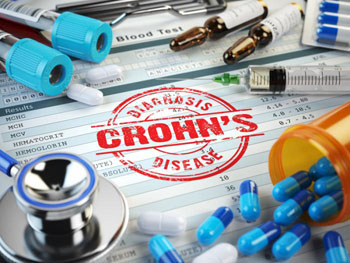Gene Activity Mapping Points to Two Subtypes of Crohn's Disease
By LabMedica International staff writers
Posted on 26 Oct 2016
Gene activity studies have found that there are two clinically relevant forms of Crohn's disease that are defined by molecular signatures that are not linked to tissue sampling location, patient age, or treatment status.Posted on 26 Oct 2016
The clinical presentation and course of Crohn's disease (CD) is highly variable with the course and severity of the disease varying widely from one case to the next. Investigators at the University of North Carolina (Chapel Hill, USA) sought to better understand the cellular and molecular mechanisms that guide this heterogeneity, and characterize the cellular processes associated with disease phenotypes.

Image: The discovery of two classes of Crohn\'s has implications for scientists to deliver more targeted treatments (Photo courtesy of MNT).
To this end they examined both gene expression and gene regulation (chromatin accessibility) in non-inflamed colon tissue from a cohort of adult patients with CD and control patients. To support the generality of these findings, they analyzed previously published expression data from a large cohort of treatment-naïve pediatric CD and control ileum (the part of the small intestine that empties into the colon).
The investigators found that adult patients with CD clearly segregated into two classes based on colon tissue gene expression - one that largely resembled the normal colon and one where certain genes showed expression patterns normally specific to the ileum. These classes were supported by changes in gene regulatory profiles observed at the level of chromatin accessibility, reflective of a fundamental shift in underlying molecular phenotypes. Furthermore, gene expression from the ilea of a treatment-naïve cohort of 201 pediatric patients with CD could be similarly subdivided into colon-like and ileum-like classes. Expression patterns within these CD subclasses highlighted large-scale differences in the immune response and aspects of cellular metabolism, and were associated with multiple clinical phenotypes describing disease behavior, including rectal disease and need for colectomy (surgical removal of the colon).
The results strongly suggested that these molecular signatures defined two clinically relevant forms of CD irrespective of tissue sampling location, patient age, or treatment status.
"The one-treatment-fits-all approach does not seem to be working for Crohn's patients," said senior author Dr. Shehzad Z. Sheikh, assistant professor of medicine and genetics at the University of North Carolina. "It is plausible that this is because only a subset of patients has the type of disease that responds to standard therapy, whereas, for the rest of the patients, we are really not hitting the right targets. We hope one day to be able to test Crohn's patients for the subtype of the disease they have, and thus determine which treatment should work best. The idea is to find the best therapeutic course for each patient as quickly and efficiently as possible."
The study was published in the October 14, 2016, online edition of the journal Gut.
Related Links:
University of North Carolina













